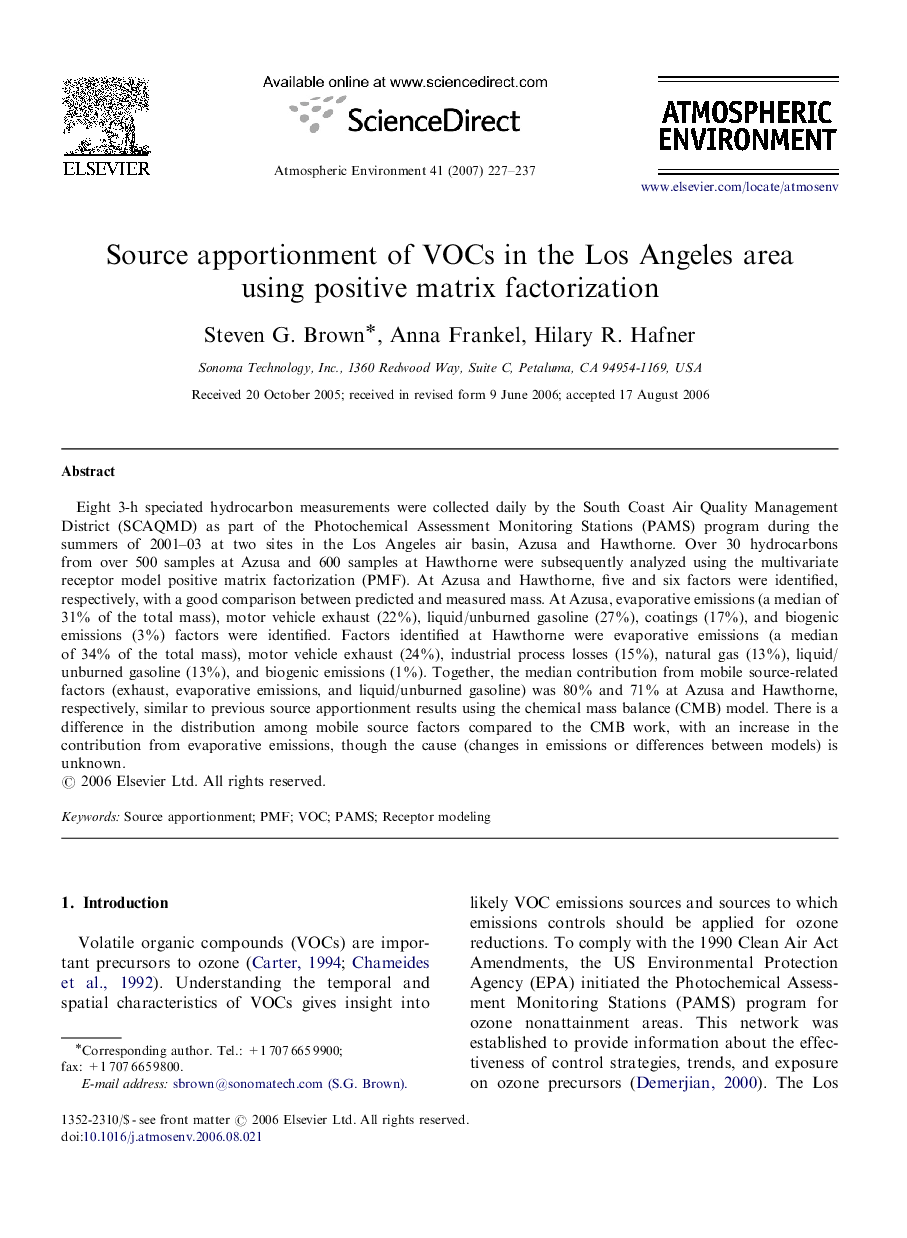| Article ID | Journal | Published Year | Pages | File Type |
|---|---|---|---|---|
| 4443945 | Atmospheric Environment | 2007 | 11 Pages |
Eight 3-h speciated hydrocarbon measurements were collected daily by the South Coast Air Quality Management District (SCAQMD) as part of the Photochemical Assessment Monitoring Stations (PAMS) program during the summers of 2001–03 at two sites in the Los Angeles air basin, Azusa and Hawthorne. Over 30 hydrocarbons from over 500 samples at Azusa and 600 samples at Hawthorne were subsequently analyzed using the multivariate receptor model positive matrix factorization (PMF). At Azusa and Hawthorne, five and six factors were identified, respectively, with a good comparison between predicted and measured mass. At Azusa, evaporative emissions (a median of 31% of the total mass), motor vehicle exhaust (22%), liquid/unburned gasoline (27%), coatings (17%), and biogenic emissions (3%) factors were identified. Factors identified at Hawthorne were evaporative emissions (a median of 34% of the total mass), motor vehicle exhaust (24%), industrial process losses (15%), natural gas (13%), liquid/unburned gasoline (13%), and biogenic emissions (1%). Together, the median contribution from mobile source-related factors (exhaust, evaporative emissions, and liquid/unburned gasoline) was 80% and 71% at Azusa and Hawthorne, respectively, similar to previous source apportionment results using the chemical mass balance (CMB) model. There is a difference in the distribution among mobile source factors compared to the CMB work, with an increase in the contribution from evaporative emissions, though the cause (changes in emissions or differences between models) is unknown.
